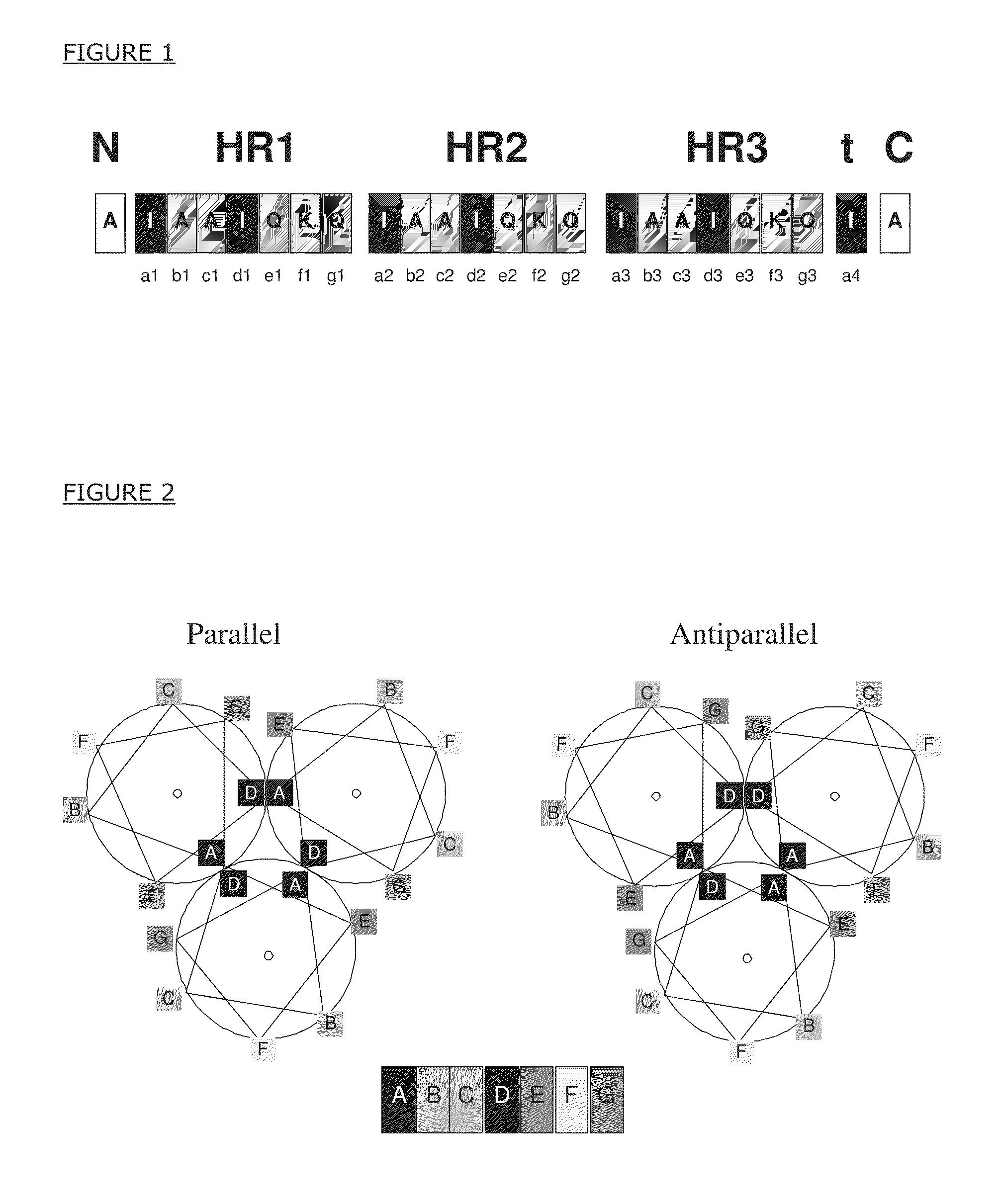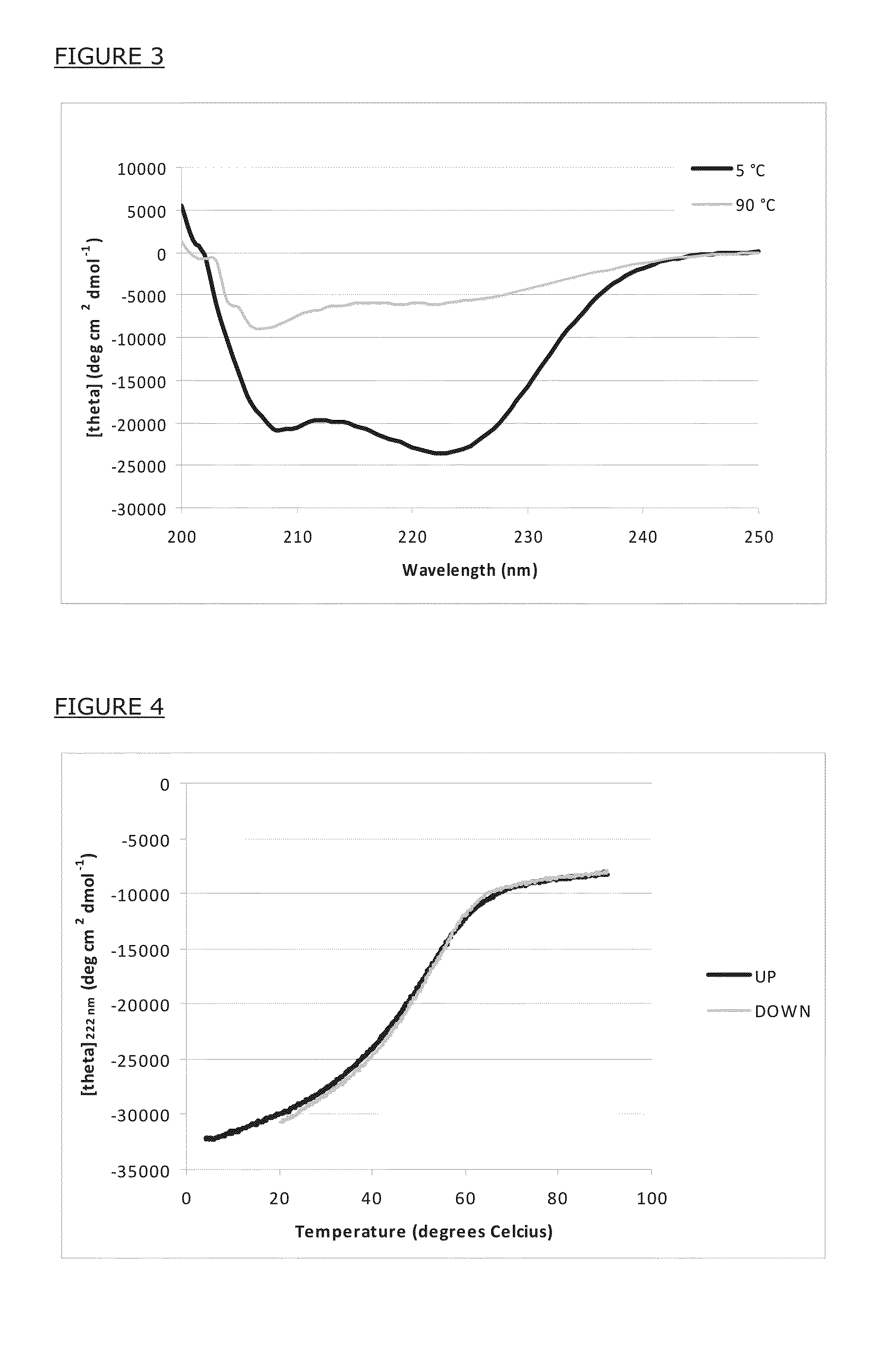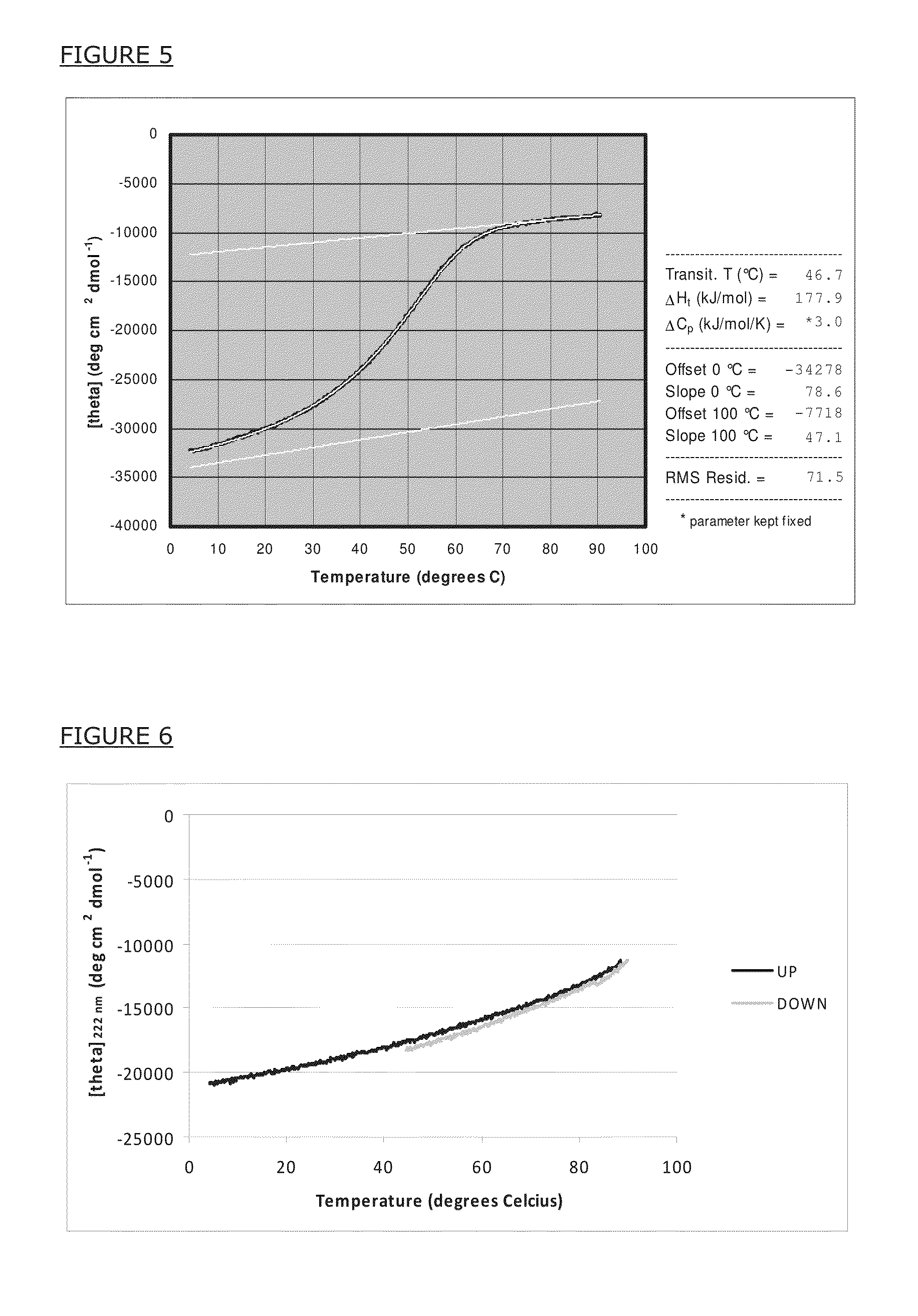Single-chain antiparallel coiled coil proteins
a single-chain, anti-parallax technology, applied in the field of molecular biology, can solve the problems of complex structure, high concentration, and difficult production of constitutive peptides via recombinant methods, and achieve high thermal stability and high value
- Summary
- Abstract
- Description
- Claims
- Application Information
AI Technical Summary
Benefits of technology
Problems solved by technology
Method used
Image
Examples
example 1
Amino Acid Sequence of a Synthetic Peptide with Core and Non-Core Residues
[0115]This example provides the amino acid sequence of a specific peptide which relates to the present invention. The amino acid sequence, AIAAIQKQIAAIQKQIAAIQKQIA AIAAIQKQIAAIQKQIAAIQKQIA (SEQ ID NO:1), is presented in single-letter notation, wherein A refers to alanine, I to isoleucine, Q to glutamine, and K to lysine. The peptides with this amino acid sequence form triple-stranded, alpha-helical coiled coil complexes by way of their isoleucine and leucine amino acid residues forming a hydrophobic core (center, interior) and the other residues being oriented towards solvent. The artificial peptide comprises three heptad repeats labeled ‘HR1’, ‘HR2’ and ‘HR3’ in FIG. 1.
[0116]The FIG. 1 is a schematic representation of the amino acid sequence of an artificial peptide comprising heptad repeats (HRx), core residues (black boxes), non-core residues (gray boxes) and flanking regions (white boxes). The peptide furt...
example 2
Principles of a Triple-Stranded, Alpha-Helical Coiled Coil Complex
[0117]Heptad core residues are shielded from solvent in triple-stranded, alpha-helical coiled coil complexes, as illustrated in FIG. 2. Non-covalent interactions between contacting core residues (positions A and D in FIG. 2) provide the main thermodynamic driving force for the peptides to adopt such fold.
[0118]The FIG. 2 is a helical wheel representation of triple-stranded, alpha-helical coiled coil structures. The left panel shows a top view on a parallel coiled coil. The right panel shows a top view on an antiparallel coiled coil. The middle panel shows the linear sequence of heptad repeat positions. Only one heptad repeat is displayed for clarity reasons. Different shades are used to indicate specific topological positions.
[0119]The core residues (positions A and D) are fully buried in the complex and are not solvent accessible. The non-core residues (positions B, C, E, F and G) are at least partially solvent-acces...
example 3
Alpha-Helical Structure and Reversible Folding / Unfolding
[0120]Peptidic alpha-helical coiled coils do not form the subject of the present invention because they do not fold into a single-chain protein. However, the single-chain proteins of the present invention do comprise a trimeric coiled coil region. Evidently, connecting the N- and C-terminal ends by linker fragments can (will) influence the folding kinetics, but the essential physical properties of the ‘excised’ coiled coil peptides are expected to be generally preserved. Hence, peptidic coiled coils may serve as a study system.
[0121]To demonstrate quantitative formation of alpha-helical secondary structure of a reference artificial peptide in solution, the inventors have synthesized the peptide with the amino acid sequence Ac-MSIEEIQKQQAAIQKQIAAIQKQIYRMTP-NH2 (SEQ ID NO:2) and recorded the circular dichroism (CD) spectrum. The amino acid sequence is given in single-letter code; Ac- and —NH2 mean that the peptide was acetyl-init...
PUM
| Property | Measurement | Unit |
|---|---|---|
| temperatures | aaaaa | aaaaa |
| unfolding temperature | aaaaa | aaaaa |
| physiological temperature | aaaaa | aaaaa |
Abstract
Description
Claims
Application Information
 Login to View More
Login to View More - R&D
- Intellectual Property
- Life Sciences
- Materials
- Tech Scout
- Unparalleled Data Quality
- Higher Quality Content
- 60% Fewer Hallucinations
Browse by: Latest US Patents, China's latest patents, Technical Efficacy Thesaurus, Application Domain, Technology Topic, Popular Technical Reports.
© 2025 PatSnap. All rights reserved.Legal|Privacy policy|Modern Slavery Act Transparency Statement|Sitemap|About US| Contact US: help@patsnap.com



